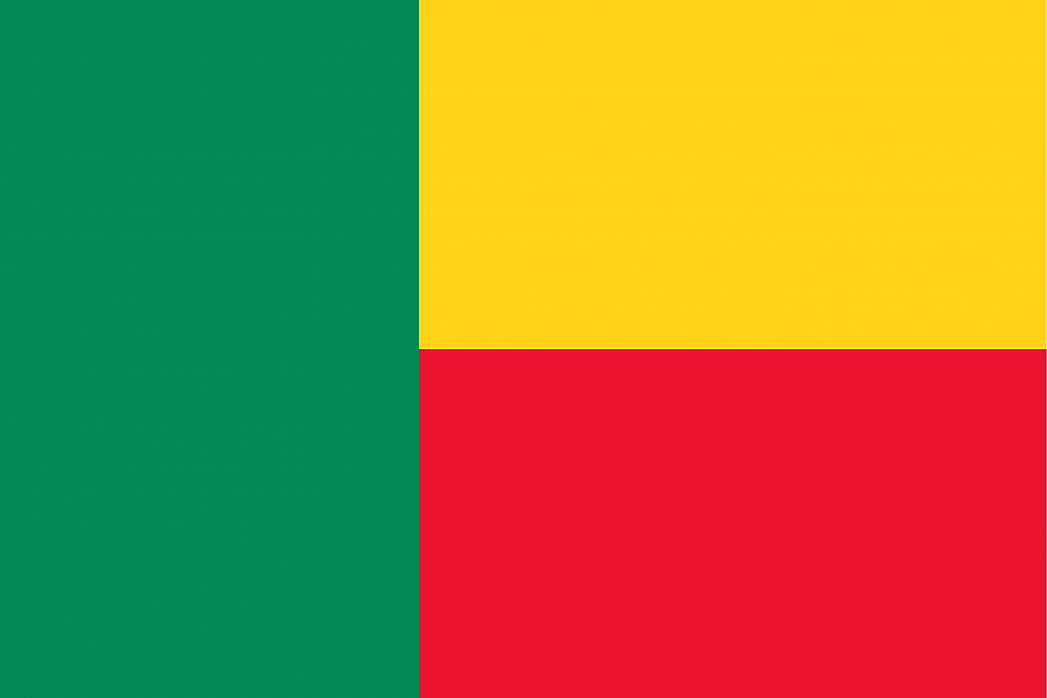The flag of Benin consists of a horizontal red and yellow band on the right-hand side and a vertical green band on the mast side. This flag was originally adopted on 16 November 1959 to replace the flag of France when the country was known as the Republic of Dahomey. After a new regime has taken power in 1975 the country was known as the People's Republic of Benin and used a different flag until 1990 when this version was re-adopted.
The flag of the People's Republic of Benin consists of the Pan-African colours associated with independence in many nations of the continent. Red is often associated with the blood that has been spilt in order to achieve an independent and free African nation, this is seen in the flags of Cameroon, Ethiopia, Ghana, and many more. Furthermore, the yellow is a symbol of the savannas in the northern part of the country and the green is symbolic of the palm groves in the south. The symbolism of this flag is also explained in the national anthem.
The original design is meant to reflect solidarity with other African nations who had gained independence around the same time. The colours are also important cultural, religious, and regional symbols in Benin which is why this design was selected. The same colours are featured on the flag of Ethiopia which is the oldest independent nation in Africa.
As Benin was previously a French colony, the flag of France was flown from 1892-1959 across the region. One year before full independence in 1960, the current flag was officially adopted. From 1975 until 1990 a Marxist government took power and renamed the country the People's Republic of Benin. The flag that was used during this time consisted of an army green field with a red, five-pointed star in the top left-hand corner.
This page was last modified on May 1st, 2018
More on Graphicmaps

Published on 2019-11-06
What is a Trade Embargo?

Published on 2019-11-04
Which Two Countries Used to Have the Same Flag?

Published on 2019-09-16
What Is the Only Two-Sided State Flag?

Published on 2019-09-16
Which Country Flag Looks Like the Texas Flag?

Published on 2019-08-29
Flags That Resemble the US Flag

Published on 2019-08-20
